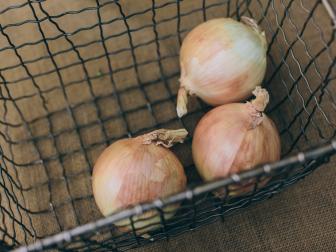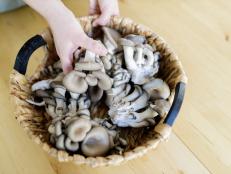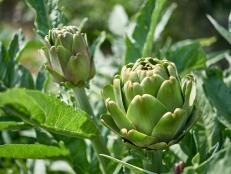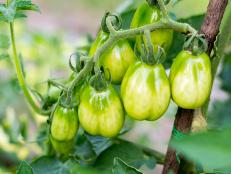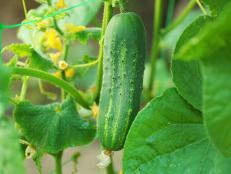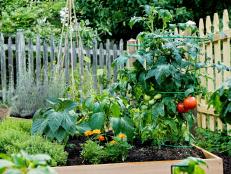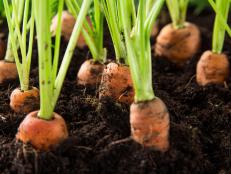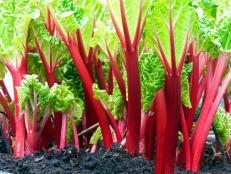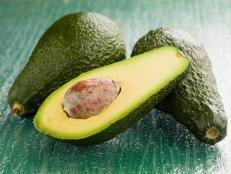How to Plant and Grow Onions
Get our tips on planting, growing and harvesting onions in your garden.
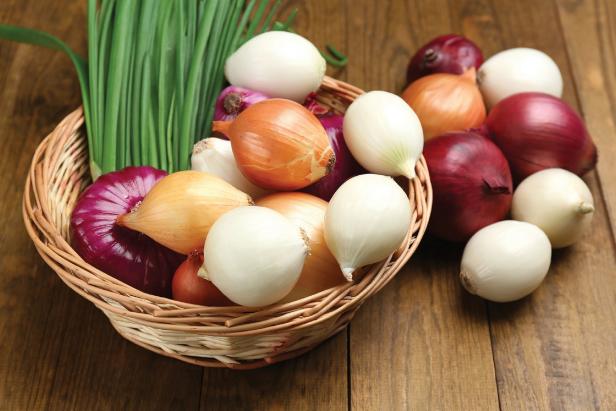
Ball Horticultural Company
Why You Should Grow Onions
If you love onions in your cooking, make room for them in your garden. They're a snap to grow and don't need lots of space, yielding even in pots. Learn the basics of how to plant onions, and you might just be able to strike them from your grocery list for good.
Start With the Right Onion
The secret to a great harvest of fat onion bulbs is choosing the right onion for your region. Onions form bulbs in response to daylength, and they're sold as short day, long day or intermediate onions. Those categories are based on latitude.
- Long day onions grow best at latitudes of 37 to 47 degrees (roughly Zones 6 and colder).
- Short day onions grow best at latitudes of 25 to 35 degrees (Zones 7 and warmer).
- Intermediate onions overlap the other regions, growing best at latitudes of 32 to 42 degrees (Zones 5 to 6).
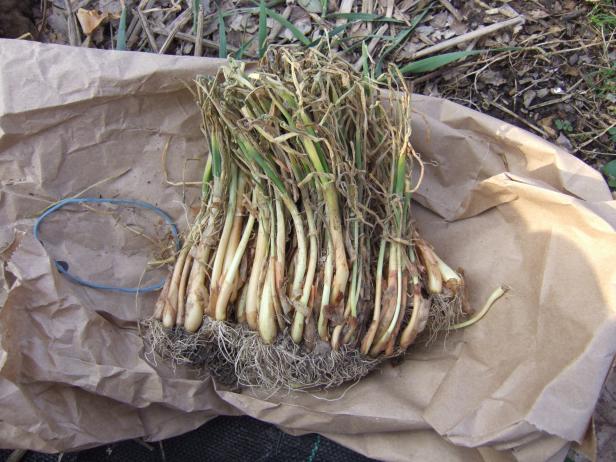
Julie Martens Forney
You can grow any type of onion in any zone, but for best results, dig up an onion map online. You can find them on most seed-seller sites.
More on Onions
Seeds, Sets or Seedlings? What's the Difference?
Seeds need the most time to yield an onion crop, and you'll need to start them indoors. Sow onion seeds indoors 10 weeks before the last average frost date for your region. Separate seedlings at planting time.
Sets are mini onion bulbs that you plant half-an-inch deep. Many people grow onions from sets; they're widely available for sale. One drawback to sets is that the bulbs they produce don't usually grow as large. That's because a set is already one year old. Onions live for two years. In the first year, they form bulbs; in the second, they form seeds. Sets are predisposed to shift into flowering mode because they're already a year old. Sets are also more susceptible to disease. If you're planting both sets and seedlings, place them in different parts of the garden.
Seedlings (above), also called starts, are small onion plants that resemble a tiny green onion. You can buy these at local garden centers or home stores or order them from onion farmers online. Seedlings are in their first year of growth, so they're ready to form bulbs.
Prepare Your Soil
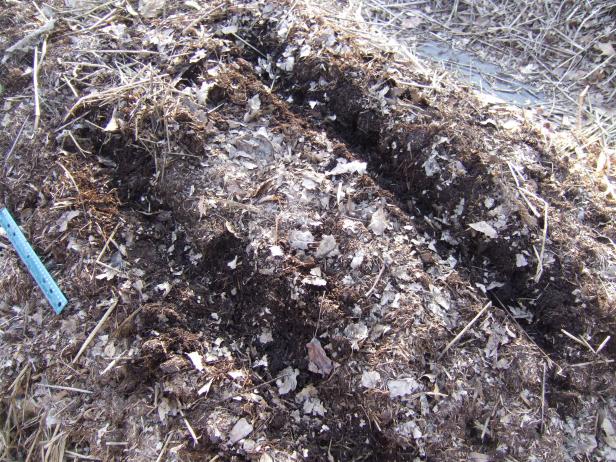
Julie Martens Forney
Give onions a spot in full sun with loose, crumbly soil high in organic matter. Enrich soil with compost or composted manure to increase the nutrients it contains. Onions grow best in mounded rows (4 inches high) or raised beds.
How to Plant Onions
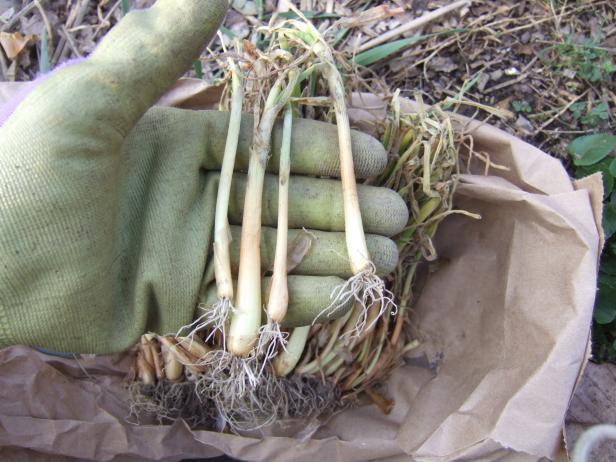
Julie Martens Forney
Tuck onions into the garden 4 to 6 weeks before your last average frost date. Plant onion sets 1/2-inch deep; seedlings, 1 inch deep. Avoid planting too deeply, which reduces the onion's ability to form a bulb.
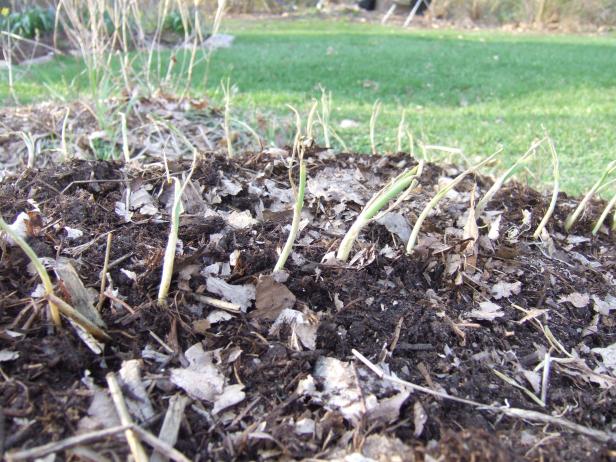
Julie Martens Forney
Seedlings with the diameter of a pencil form the best bulbs. Grow larger and smaller ones as green onions. Space onions 4 inches apart for bulbs. If you want to grow any as green onions, plant them 2 inches apart, harvesting every other one to create that ideal 4-inch spacing for bulbs. It's okay to plant ones you'll pull as green onions deeper than 1 inch because you don't want a bulb to form. Planting deeper yields more of the juicy white stem.
Water Your Onions Well
Water bulbs after planting to settle soil. Onions often appear to grow very little at the start of the season. Be patient and wait. They will grow.
Keep Your Onions Well-Fed
Onions need different nutrients at different points in their growing cycle. Start the growing season with a fertilizer that has a high middle number (phosphorus). Every three to four weeks after planting, feed them with a high-nitrogen product (first number higher). Many gardeners prefer using a water soluble fertilizer like fish emulsion to give onions the nitrogen they need. Stop fertilizing when bulbs start to form.
Pull Weeds
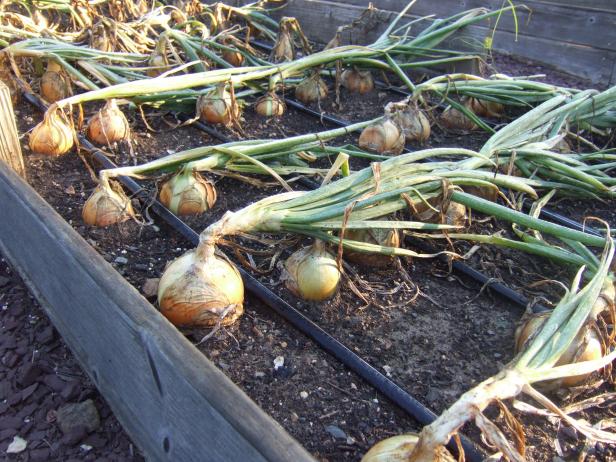
Julie Martens Forney
Clear all weeds prior to planting and keep them removed during the growing season. If you use mulch to help suppress weeds, pull it back from the onions as bulbs start to form.
Wait for the Harvest
When onions are ready to harvest, the green tops turn brown and fall over. On a sunny day, pull onions early in the morning. Let them lay on the growing bed in the sun for two to three days. Cover the bulbs with the tops of another onion to prevent sunscald. Don't let bulbs get wet at this point. Dew is okay; rain is not.
Cure the Crop
A properly cured onion stores the longest. Curing means the onion has dried thoroughly from the neck (where the stem meets the bulb) to the bulb surface. The onion skin becomes dry and papery. When tops are completely dry, they should pull right off the bulb. After curing your onions outdoors for a few days, move them indoors to a spot where they're protected from weather and have good air flow. Lay them on screens to finish drying. When bulbs are completely dry, clip roots and either clip or braid tops.
How to Braid Garlic and Onions for Storage
Learn to braid garlic for storage and have flavorful — and beautiful — homegrown garlic at your fingertips well into winter. This method also works for onions.
Store for Winter
Place onions in a cool, dry area with good air flow. Tuck bulbs into a mesh bag to increase air exposure. In a cool spot (45 F), onions store from three to 10 months. Sweeter onions usually don't store as well, so plan to eat those first.
Onion Recipes from Food Network
Try some of Food Network's best onion recipes:







